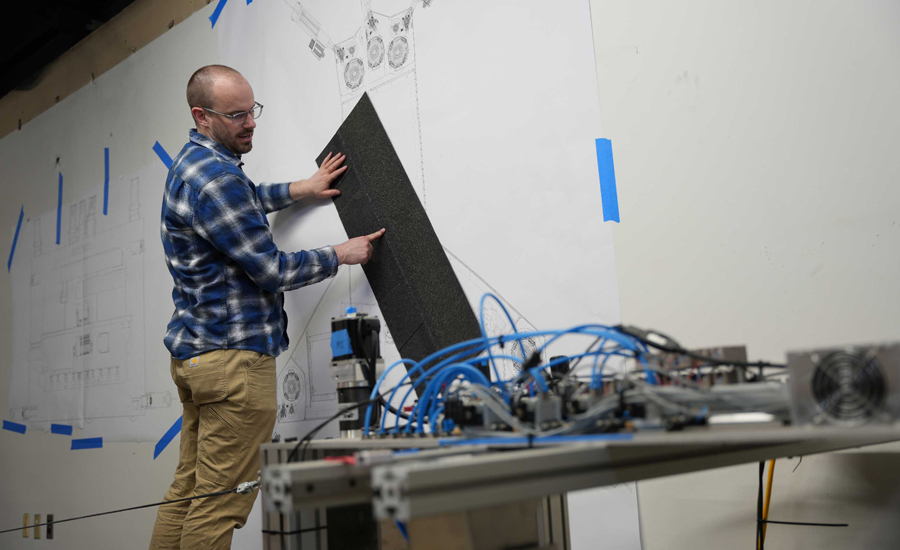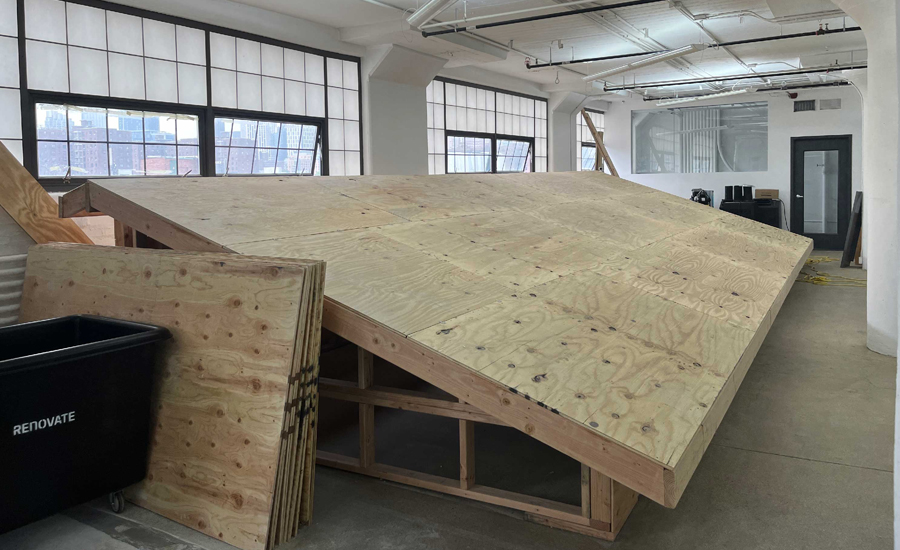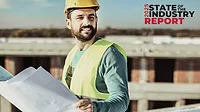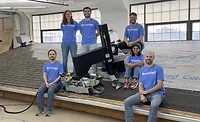Roofing Technology
Robotics in Roofing
Pilot program to test roofing robots slated for the fall

Photos: Renovate Robotics
The labor shortage is not a new problem to those in roofing, but Renovate Robotics offers a novel solution that might revolutionize the industry.
The New York-based startup is currently looking for beta testers to perform pilot projects with a robot that installs asphalt shingles. If successful, the robot could be a major step toward solving the labor shortage while making roofing jobs safer, quicker and more cost-effective.
Robots in roofing seem more like a sci-fi concept, and until recently, it has remained so. Currently, the closest form of robotics involves adhesive applicators, drones and other unmanned aerial imagery for measurements and assessments. In 2019, the University of Michigan developed a drone that could install shingles, but needs to be further developed for commercial use.
The idea of building a roofing robot sprang from solving a pain point. Andy Stulc, founder and CEO of Renovate Robotics, grew up surrounded by a family of construction industry workers. He pursued a more technical career in mechanical engineering, but things came full circle when he purchased a home that underwent roof replacement in 2020.
“I hired a contractor, went through the whole quoting process,” Stulc said. “The contractors were all booked-out 10 weeks and super busy.”
With more than a decade of experience building automation technologies for the food and aerospace industries, Stulc saw an opportunity to bring robotics into roofing to solve the labor issue. He notes that roofing lends itself to automated solutions by the very nature of the work.
“It’s this really dangerous, really repetitive work, and I just thought, ‘I bet we can build a robot to do that,’” he said.
Stulc worked on the design during the pandemic, and in February 2022, venture capital fund SOSV became the first investor. Dylan Crow, who worked for the venture firm, was so impressed by the idea that he left SOSV to become Renovate Robotics’ co-founder and COO in January.
Crow said roofing is a unique platform with the potential for energy generation via solar, but it’s also the first line of defense for homes against the effects of severe weather and climate change. Helping innovate that industry inspired him to make the jump.
“Having seen the way [Stulc] worked, and his capabilities as an engineer, a combination of both of those things got me really excited about how transformative the company, I think, will be in the broader industry,” he said.
Other investors share Crow’s belief. Renovate Robotics received $2.5 million in pre-seed funding this June from several sources, including Alley Robotics Ventures and SOSV’s HAX, Newlab, Uphonest Capital and Climate Capital. With the cash infusion, Renovate Robotics expects to bring on eight new team members this month to manufacture the complete system for pilot testing later this fall.

Stulc has more than 10 years of experience in building automation technology in industries like food and aerospace.
Improving Roofing Operations
The robot is designed to navigate a roof using a winch system, pulling itself along wires attached to five anchor points — similar to how overhead cameras move in a football stadium. With the aid of sensors, the robot moves in a horizontal line, unloading shingles from an internal hopper and nailing them down before moving to the next spot.
The first iteration weighs in at around 300 pounds and is said to be most efficient when installing shingles on roofs with more extensive square footage and fewer cut-up planes and dormers. Renovate expects future models will be sleeker and lighter, and able to handle more complex roofs.
Stulc and Crow said the goal of the roofing robot is to address multiple challenges facing the roofing industry. Labor augmentation is the obvious lodestar, but another main concern is safety. According to data from the Bureau of Labor Statistics, roofing is one of the top three deadliest occupations in the U.S., so having robotic workers could save lives. Meanwhile, the robot itself is designed with safe usage in mind, such as its fifth wire acting as a tether.
“We've thought a lot about safety considerations, and that's really driven a lot of the engineering decisions in terms of the hardware that we're using, the sensors that we're using and the way that we're designing them,” Stulc said. “The goal with all that sensitization and control data is that you know something's going wrong before it catastrophically fails.”
A robot would also install roofing materials faster and more accurately than humans. Stulc said its software takes in the roof geometry and generates the shingle layout and nail locations. This data is all available for review, so contractors can determine whether seams are lining up and nails are properly placed.
“One of the things we're doing there is validating that it's installed correctly, and then that helps to answer those questions when, if there are problems, is it a material problem? Is it a workmanship problem?” he asked rhetorically.
The Renovate team expects the robot could help roofers gain additional work, saying it can double the per-person productivity of a roofing crew.
“If you take your crew of six people and you split that into two crews of three people with a robot each, you can do twice the projects, twice the revenue,” Stulc said.

Renovate Robotics has tested a prototype of its shingle-installing robot on an indoor test roof prior to releasing it for field testing this fall.
A Fleet of Roofing Robots?
As great as these goals sound, the team is keenly aware of the obstacles they must still overcome. While the robot is great for simple roof styles, it would have a tough time with more complicated roof designs. There is also the concern of buy-in from contractors. The hope is that contractors will warm up to the idea once the robot is ready to go.
“I’ve been spending a lot of time with contractors and … seeing is believing, so they certainly want to see it; they want to make sure it’s going to be safe,” Crow said.
Roofers who are worried about robots taking over the industry can breathe easy. At this point, humans are still needed to tear off old roofs, evaluate the roof’s condition, and install elements like underlayment and starter shingles. Humans will also supervise the robot as it works.
“We don’t want to build a robot that people don’t look to use,” Crow said. “We’re very much focused on building a robot that has a use case and has a place in one role.”
Renovate has been testing a prototype at its offices using an indoor 400-square-foot roof. Roofers interested in beta testing the robot are encouraged to contact Renovate. Crow said the robot would likely benefit roofing contractors with larger operations.
“A lot of the larger contractors that we've been speaking to are doing $30, $40, $50 million a year of recurring revenue,” he said.
Renovate is already looking toward the future, with visions of having robots that can install different roof types, including ceramics, solar shingles and even traditional solar panels. There are even ideas of building one that can assist with tear-offs. But for now, the team is excited to work with contractors interested in improving the industry.
“A lot of the projects where [contractors] see the value is [in] doing projects faster, but also safer,” Crow said. “For them, it’s about making sure that their workforce is not in a lot of dangerous environments.”
Looking for a reprint of this article?
From high-res PDFs to custom plaques, order your copy today!








